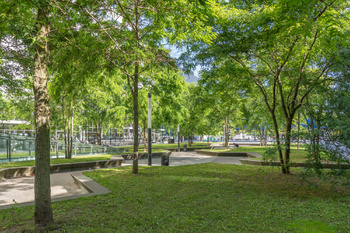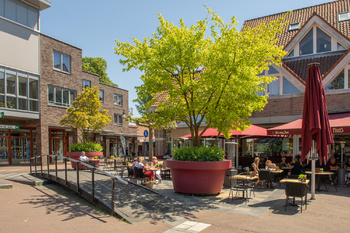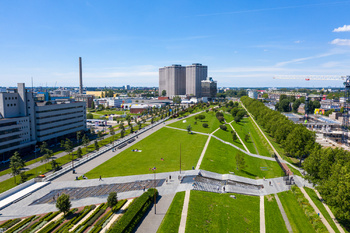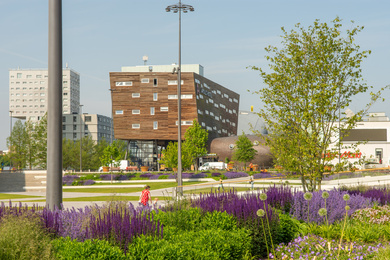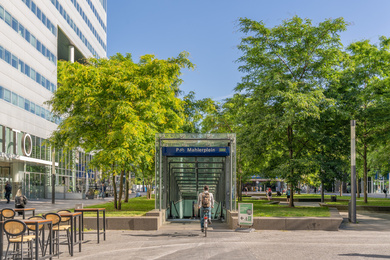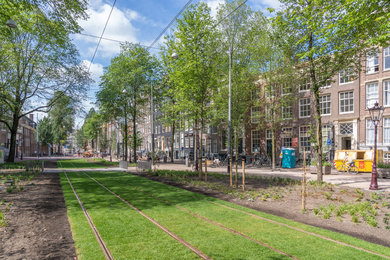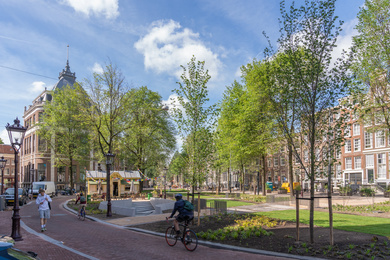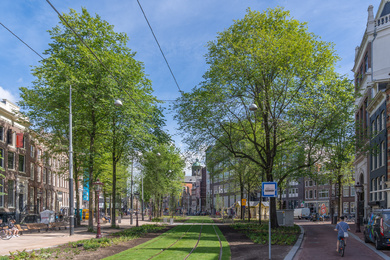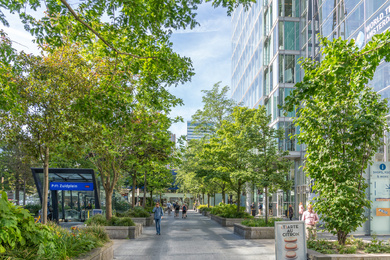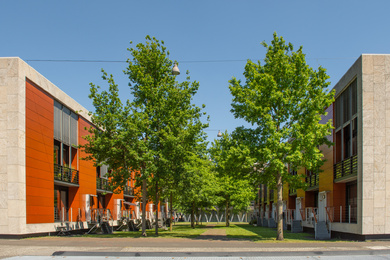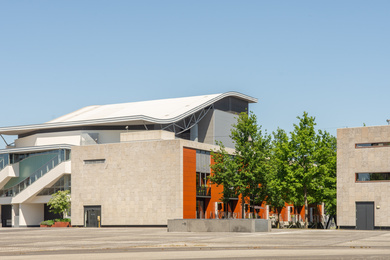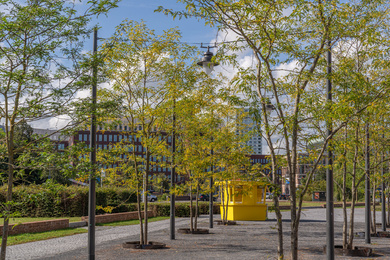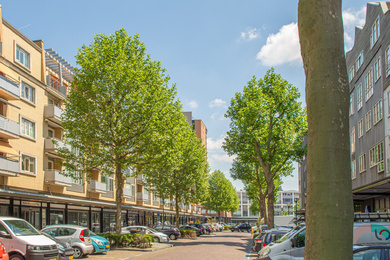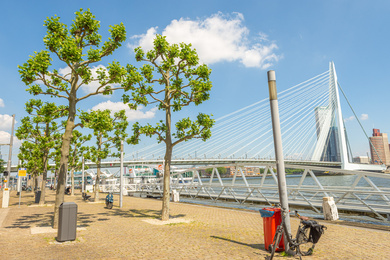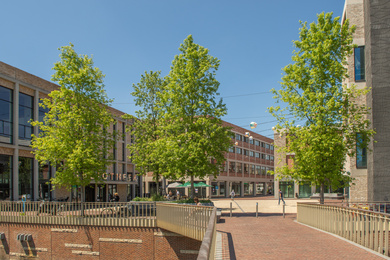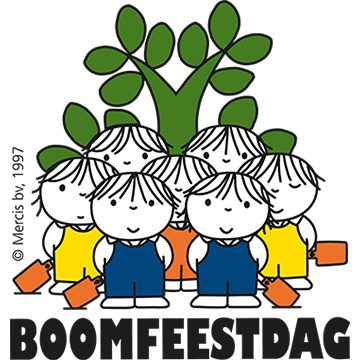Urban trees for the future
Trees are the key to the liveable city of the future. They make a significant contribution to the natural balance in the built environment. Climate change, extreme heat and drought alternated with excessive rainfall make ever greater demands on the urban environment.
Ecosystem services provided by urban trees
At local level trees in towns and cities have effects which are vitally important for creating a liveable future-proof city: cooling, water storage, improving air quality, CO2 reduction, more biodiversity, a better home and living environment and greater economic value.
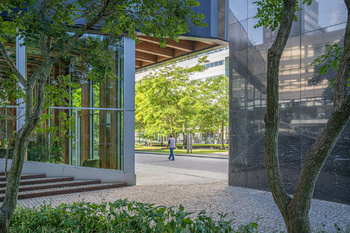
Cooling
Trees offer shade and cooling. Through evaporation, trees create increased air humidity and help to reduce temperature. In addition, they absorb less heat than, for example, asphalt and they do not reflect sunlight like many modern buildings. Thus, they make a significant contribution to reducing the urban heat effect.
Water storage
Planted areas of ground have a better water-storage capacity. Water filters deeper into the soil through the roots of the trees. Special green facilities are increasingly being laid out in towns and cities for the storage and infiltration of rainwater, such as in wadis. Water is buffered in a wadi; it remains standing there for a maximum of 24 hours and infiltrates the ground over that time. Planting trees in wadis helps them to function better. Of course, the trees chosen for this are resistant to both flooding and drought.
Improving air quality
Trees help in the absorption of harmful pollutants, such as ozone, nitrogen dioxide, sulphur dioxide and particulate matter. They remove harmful particles which can cause breathing problems. Trees also produce oxygen.
CO2 reduction
Trees remove CO2 from the air and store it in the roots, trunk, branches and leaves. In this way they help to reduce CO2 in the atmosphere.
More biodiversity
Trees are simultaneously part of and also supporters of biodiversity. Trees provide food and protection for birds, insects and small animals. Because of their structure and the differences between them, trees provide varied living conditions for them.
Better home, work and living environment
Trees literally bring life to the ‘concrete’ city. Various studies show that trees have a positive effect on people’s well-being and mental health. In 2022 the Bosk cultural project allowed the citizens of Leeuwarden to experience this effect directly. The aesthetics, the noise-reducing and wind-absorbing effect, the familiarity and traffic management, these are all factors which make the environment more pleasant.
Economic value
Trees have a great effect on the value of real estate. This value increases over time, as the trees grow and produce a greater area of foliage.
Criteria for urban trees
Trees in towns and cities have to deal with a number of stress factors connected with an urban environment. These include air pollution and emissions of other pollutants, insufficient space for roots, soil sealing, stress caused by salt, absence of natural enemies and high heat reflection from buildings and other materials. Added to these there are the consequences of climate change; all matters which have to be taken into account in the selection of tree varieties. The variety of tree must be consistent with the variables of the urban environment, where no two planting locations are the same; the right tree in the right place.
Ebben Nurseries has developed a comprehensive online tree search tool, TreeEbb, for this. In this search tool it will take you just a few clicks to put together the perfect range for your green project, based on selected filters. Our planting advisors are of course happy to share ideas with you in selecting a range that fits into the urban environment. Do not hesitate to contact them.
Go to TreeEbb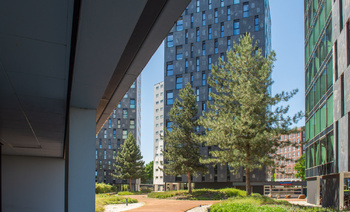
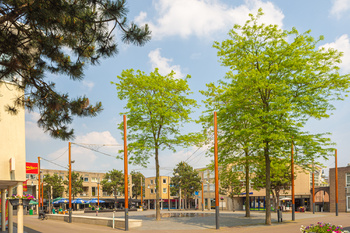
Planting locations for trees in towns and cities
In the future plants will play an ever greater role in the quality of life of cities. It is no longer a question of the number of trees there, but rather the percentage surface area which is covered with plants. Research indicates that, if this is less than 20%, the environment is no longer attractive. A new general rule for this is the 3-30-300 rule: there are 3 trees visible from every house, every neighbourhood has 30% tree canopy and no-one lives further than 300 metres from a green space.
Healthy, vigorous trees have the greatest effect. It is, therefore, important that the trees can mature. Depending on the conditions, we have the choice of different planting sites in a city. One place will require more measures than another.
- Trees along streets and avenues
- Trees in roof gardens
- Trees in courtyard gardens
- Trees in containers
- Trees in wadis
- Trees in squares
- Trees in parks
Find the right tree in TreeEbb
